-
 Bitcoin
Bitcoin $112400
-1.07% -
 Ethereum
Ethereum $3409
-3.27% -
 XRP
XRP $2.784
-6.60% -
 Tether USDt
Tether USDt $0.9997
-0.03% -
 BNB
BNB $739.3
-2.09% -
 Solana
Solana $158.0
-2.90% -
 USDC
USDC $0.9998
-0.02% -
 TRON
TRON $0.3213
-0.94% -
 Dogecoin
Dogecoin $0.1929
-5.01% -
 Cardano
Cardano $0.6974
-2.82% -
 Hyperliquid
Hyperliquid $36.69
-2.31% -
 Sui
Sui $3.327
-4.80% -
 Stellar
Stellar $0.3672
-5.18% -
 Chainlink
Chainlink $15.65
-3.07% -
 Bitcoin Cash
Bitcoin Cash $525.0
-1.68% -
 Hedera
Hedera $0.2291
-6.00% -
 Avalanche
Avalanche $20.91
-2.96% -
 Ethena USDe
Ethena USDe $1.000
0.00% -
 Toncoin
Toncoin $3.520
-1.12% -
 UNUS SED LEO
UNUS SED LEO $8.968
0.14% -
 Litecoin
Litecoin $105.7
0.26% -
 Shiba Inu
Shiba Inu $0.00001181
-1.79% -
 Polkadot
Polkadot $3.492
-2.08% -
 Uniswap
Uniswap $8.800
-3.10% -
 Dai
Dai $0.9999
-0.01% -
 Monero
Monero $289.9
-3.17% -
 Bitget Token
Bitget Token $4.243
-1.27% -
 Pepe
Pepe $0.00001006
-3.67% -
 Cronos
Cronos $0.1248
-5.68% -
 Aave
Aave $249.7
-2.50%
What are the XRP quantitative strategies? How to set up automatic buying and selling when the moving average crosses?
XRP traders use quantitative strategies like moving average crossovers to automate buying and selling, reducing emotional bias and aiming for consistent profits.
May 19, 2025 at 06:29 pm
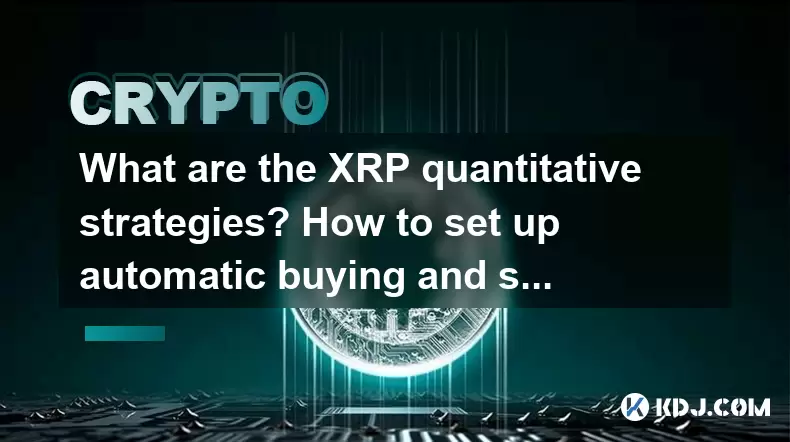
Introduction to XRP Quantitative Strategies
XRP, one of the leading cryptocurrencies, has garnered significant attention from traders and investors due to its potential for high returns. Quantitative strategies in trading XRP involve using mathematical models and algorithms to make trading decisions. These strategies aim to reduce emotional bias and increase the consistency of trading outcomes. In this article, we will delve into various quantitative strategies for trading XRP and provide a detailed guide on setting up automatic buying and selling when the moving average crosses.
Understanding Moving Averages in XRP Trading
Moving averages are one of the most commonly used indicators in technical analysis. They help traders identify trends and potential reversal points in the price of XRP. A moving average smooths out price data by creating a constantly updated average price. The two most popular types of moving averages are the Simple Moving Average (SMA) and the Exponential Moving Average (EMA).
- Simple Moving Average (SMA): This is calculated by adding up the closing prices of XRP over a certain number of periods and then dividing by that number of periods.
- Exponential Moving Average (EMA): This type of moving average gives more weight to recent prices, making it more responsive to new information.
The Concept of Moving Average Crossovers
Moving average crossovers are a popular strategy used by traders to generate buy and sell signals. A crossover occurs when a short-term moving average crosses above or below a long-term moving average.
- Golden Cross: This happens when a short-term moving average, such as the 50-day EMA, crosses above a long-term moving average, such as the 200-day EMA. It is considered a bullish signal, indicating that the price of XRP may continue to rise.
- Death Cross: Conversely, a death cross occurs when the short-term moving average crosses below the long-term moving average. This is seen as a bearish signal, suggesting that the price of XRP may decline.
Setting Up Automatic Buying and Selling on Moving Average Crossovers
To set up an automatic trading system based on moving average crossovers, traders can use various trading platforms that support algorithmic trading. Here is a step-by-step guide on how to set this up:
- Choose a Trading Platform: Select a platform that supports algorithmic trading and has access to XRP markets. Examples include Binance, Kraken, and Coinbase Pro.
- Set Up Your Account: Ensure your account is fully verified and funded with enough XRP or other cryptocurrencies to execute trades.
- Select the Moving Averages: Decide on the time periods for your moving averages. Common choices are the 50-day and 200-day EMAs.
- Create the Algorithm: Use the platform's scripting language or a third-party tool to write the algorithm. The algorithm should:
- Monitor the price of XRP and calculate the chosen moving averages in real-time.
- Generate a buy signal when the short-term moving average crosses above the long-term moving average.
- Generate a sell signal when the short-term moving average crosses below the long-term moving average.
- Backtest the Strategy: Before going live, backtest your algorithm using historical data to ensure it performs as expected.
- Implement and Monitor: Once satisfied with the backtesting results, implement the algorithm on the trading platform and monitor its performance closely.
Other Quantitative Strategies for Trading XRP
Apart from moving average crossovers, there are several other quantitative strategies that traders can use to trade XRP:
- Mean Reversion: This strategy is based on the assumption that prices will revert to their mean over time. Traders using this strategy will buy XRP when its price is below its historical average and sell when it is above.
- Momentum Trading: Momentum traders look for trends in the price of XRP and aim to capitalize on the continuation of these trends. They use indicators like the Relative Strength Index (RSI) to identify overbought or oversold conditions.
- Arbitrage: This involves taking advantage of price differences of XRP across different exchanges. Traders buy XRP on one exchange where it is cheaper and sell it on another where it is more expensive.
- Statistical Arbitrage: This strategy uses statistical models to identify pairs of cryptocurrencies, including XRP, that are historically correlated. When the prices of these pairs diverge, traders can buy the underperforming asset and sell the outperforming one, expecting the prices to converge again.
Implementing Quantitative Strategies in Practice
Implementing quantitative strategies requires a deep understanding of both the technical aspects of trading and the specific characteristics of XRP. Traders must consider factors such as liquidity, transaction fees, and market volatility when designing their algorithms.
- Liquidity: Ensure that there is enough trading volume on the exchange to execute your trades without significant slippage.
- Transaction Fees: Factor in the costs of trading, as these can erode profits, especially in high-frequency trading scenarios.
- Market Volatility: XRP can be highly volatile, so algorithms must be designed to handle sudden price movements and potential market shocks.
Tools and Platforms for Quantitative Trading
Several tools and platforms are available to help traders implement quantitative strategies for XRP. Some of the most popular include:
- TradingView: A platform that offers advanced charting tools and the ability to write and backtest trading scripts.
- MetaTrader: Widely used for forex trading, it can also be adapted for cryptocurrency trading with the right plugins.
- QuantConnect: A cloud-based platform that allows users to develop, test, and deploy algorithmic trading strategies.
- Cryptohopper: A user-friendly platform that allows traders to automate their trading strategies without needing to write code.
Conclusion on XRP Quantitative Strategies
Quantitative trading strategies offer a systematic approach to trading XRP, potentially leading to more consistent and profitable outcomes. By leveraging moving average crossovers and other quantitative techniques, traders can automate their trading processes and reduce the impact of emotional decision-making. However, it is crucial to thoroughly backtest and monitor these strategies to ensure they perform well in live trading conditions.
Frequently Asked Questions
Q1: Can I use quantitative strategies for other cryptocurrencies besides XRP?
Yes, quantitative strategies can be applied to other cryptocurrencies as well. The principles remain the same, but you may need to adjust the parameters of your algorithms to account for the specific characteristics of each cryptocurrency, such as its volatility and liquidity.
Q2: How often should I review and adjust my quantitative trading strategies?
It is recommended to review your strategies at least monthly or whenever there are significant changes in market conditions. Adjustments may be necessary to optimize performance and adapt to new trends or patterns in the market.
Q3: Are there any risks associated with using quantitative trading strategies for XRP?
Yes, there are risks involved, including the potential for significant losses if the market moves against your strategy. Additionally, technical issues such as platform downtime or errors in your algorithm can lead to unintended trades. It's important to have risk management measures in place, such as stop-loss orders and position sizing.
Q4: Do I need to be a programmer to implement quantitative trading strategies for XRP?
While having programming skills can be beneficial, it is not strictly necessary. Many trading platforms offer user-friendly interfaces and pre-built algorithms that allow you to set up quantitative strategies without writing code. However, understanding the basics of programming can help you customize and optimize your strategies more effectively.
Disclaimer:info@kdj.com
The information provided is not trading advice. kdj.com does not assume any responsibility for any investments made based on the information provided in this article. Cryptocurrencies are highly volatile and it is highly recommended that you invest with caution after thorough research!
If you believe that the content used on this website infringes your copyright, please contact us immediately (info@kdj.com) and we will delete it promptly.
- BlockDAG, SEI, Ethena: Top Crypto Performers Under the Microscope
- 2025-08-03 10:50:16
- Bitcoin Blasts Past $119K: How Institutional Adoption and Macro Shifts Fuel the Fire
- 2025-08-03 10:55:16
- Crypto, Grok, and August: Decoding the Latest Trends and Insights
- 2025-08-03 11:10:16
- Crypto, Phishing, and Your Wallet: A New Yorker's Guide to Staying Safe
- 2025-08-03 10:30:16
- Troller Cat Meme Coin Presale Soars: A New King in the Crypto Jungle?
- 2025-08-03 10:30:16
- Grayscale, Altcoin Trust, and Mid-Cap Mania: What's the Deal?
- 2025-08-03 08:50:16
Related knowledge

What is Chainlink (LINK)?
Jul 22,2025 at 02:14am
Understanding Chainlink (LINK): The Decentralized Oracle NetworkChainlink is a decentralized oracle network designed to bridge the gap between blockch...
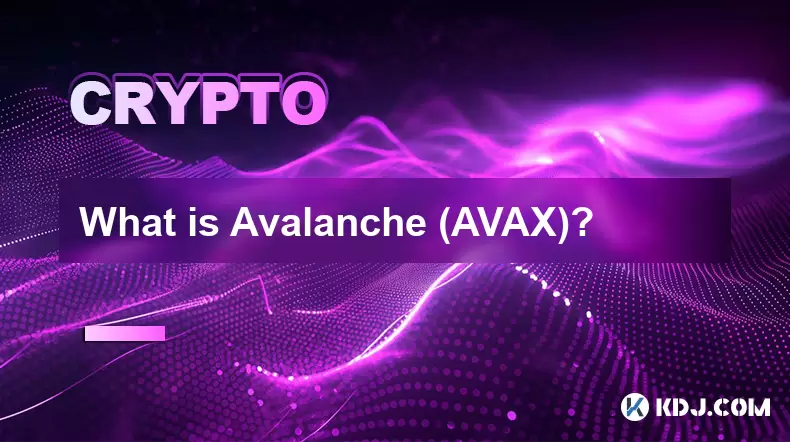
What is Avalanche (AVAX)?
Jul 22,2025 at 08:35am
What is Avalanche (AVAX)?Avalanche (AVAX) is a decentralized, open-source blockchain platform designed to support high-performance decentralized appli...
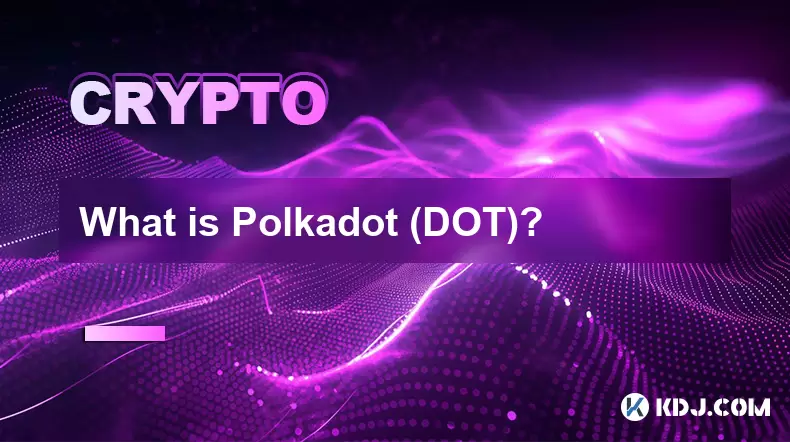
What is Polkadot (DOT)?
Jul 19,2025 at 06:35pm
Understanding the Basics of Polkadot (DOT)Polkadot (DOT) is a multi-chain network protocol designed to enable different blockchains to transfer messag...
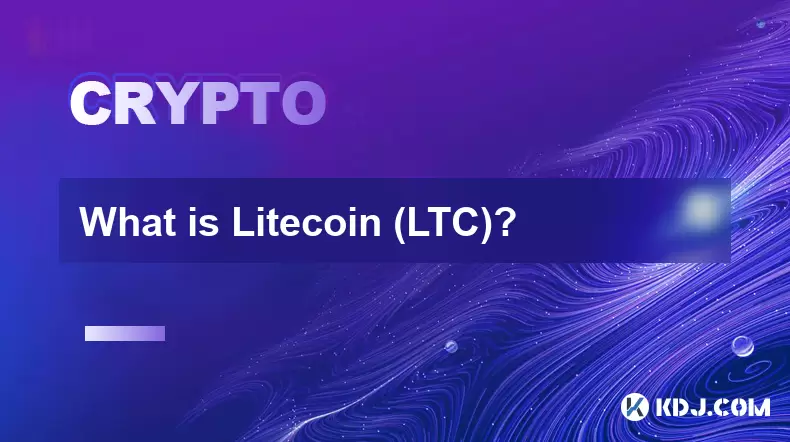
What is Litecoin (LTC)?
Jul 23,2025 at 11:35am
Overview of Litecoin (LTC)Litecoin (LTC) is a peer-to-peer cryptocurrency that was created in 2011 by Charlie Lee, a former Google engineer. It is oft...
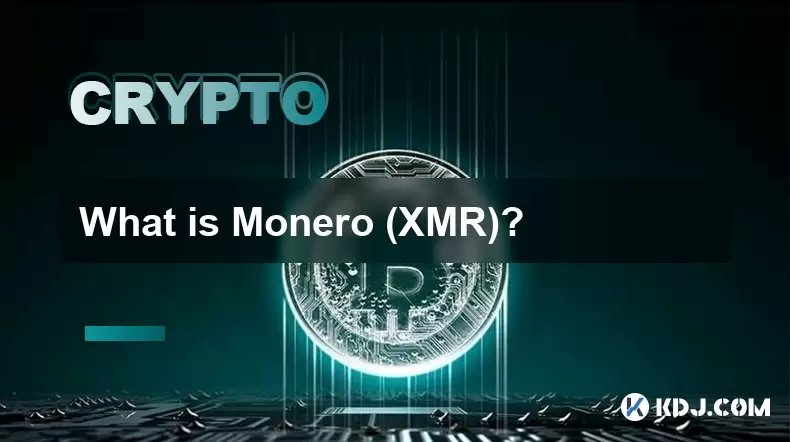
What is Monero (XMR)?
Jul 21,2025 at 10:07am
What is Monero (XMR)?Monero (XMR) is a decentralized cryptocurrency designed to provide enhanced privacy and anonymity for its users. Unlike Bitcoin a...
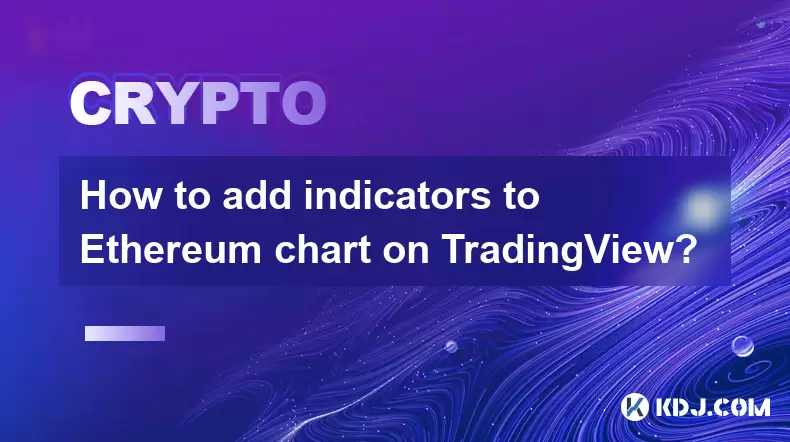
How to add indicators to Ethereum chart on TradingView?
Jul 19,2025 at 07:15am
What Is an Ethereum Chart on TradingView?The Ethereum chart on TradingView is a visual representation of the price movement of Ethereum (ETH) over a s...

What is Chainlink (LINK)?
Jul 22,2025 at 02:14am
Understanding Chainlink (LINK): The Decentralized Oracle NetworkChainlink is a decentralized oracle network designed to bridge the gap between blockch...

What is Avalanche (AVAX)?
Jul 22,2025 at 08:35am
What is Avalanche (AVAX)?Avalanche (AVAX) is a decentralized, open-source blockchain platform designed to support high-performance decentralized appli...

What is Polkadot (DOT)?
Jul 19,2025 at 06:35pm
Understanding the Basics of Polkadot (DOT)Polkadot (DOT) is a multi-chain network protocol designed to enable different blockchains to transfer messag...

What is Litecoin (LTC)?
Jul 23,2025 at 11:35am
Overview of Litecoin (LTC)Litecoin (LTC) is a peer-to-peer cryptocurrency that was created in 2011 by Charlie Lee, a former Google engineer. It is oft...

What is Monero (XMR)?
Jul 21,2025 at 10:07am
What is Monero (XMR)?Monero (XMR) is a decentralized cryptocurrency designed to provide enhanced privacy and anonymity for its users. Unlike Bitcoin a...

How to add indicators to Ethereum chart on TradingView?
Jul 19,2025 at 07:15am
What Is an Ethereum Chart on TradingView?The Ethereum chart on TradingView is a visual representation of the price movement of Ethereum (ETH) over a s...
See all articles

























































































